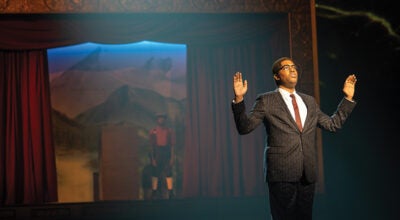A chip off the block
Published 6:30 pm Tuesday, July 11, 2023
Woodcarver and painter Jim Warren has honed his craft for decades
Jim Warren grew up on a farm watching his grandfather whittle.
“One thing led to another,” said Warren, who for nearly 50 years has immersed himself in the time-honored craft of woodcarving.
Warren, now 73, has lived most of his life on the same Isle of Wight County farm his father purchased shortly after Warren was born. Warren retired from Dominion Energy’s Surry nuclear power plant about 11 years ago, but says he’s busier than ever. He’s made hundreds of carvings over the years, most by special order.
“They’ll bring me a picture of their house, a picture of this store, sometimes they’ll bring wood from an old house,” Warren said.
Relief carving entails creating a three-dimensional image in wood. For landscapes, that means cutting out the deepest background areas first, and removing layer by layer to create shadowing with different depths. It’s all done by hand with knives and chisels.
When he first started, he got a lot of cuts. Now he wears a glove when carving.
“You’ve gotta keep your tools sharp, very sharp,” Warren said.
It also takes a lot of hand pressure to keep the blade on course, and there’s little to no margin for error.
But he’s had a lot of practice over the decades. During his 34 years with Dominion, he’d head to his workshop after work and start carving.
“I can sit here and not even think about what I’m doing,” Warren said.
His precision carving came to the attention of county officials in the early 1980s when he got commissioned – or, in his words, “conscripted” – into making a carving of Isle of Wight’s then-new county seal. Prior to 1984, the county used a circular design featuring a plow and sunburst. County resident Betty Hanlon had designed a new seal that year to commemorate the 1634-founded county’s 350th anniversary. Warren was tasked with carving the design, which features a pine tree, ham, peanut and the historic St. Luke’s Church and 1750 courthouse atop the shoe-shaped county, into a wooden box that then-Gov. Chuck Robb presented to dignitaries from Isle of Wight, England, for the occasion.
“That kind of punched my ticket,” Warren said.
He also paints rocks – often with farming scenes – and frequently works on more than one project at a time. While one is drying, he may go back to an in-progress relief carving or one of his wooden benches.
“I love to carve more than paint, but as you can see, I do both,” Warren said.
He’s never had art lessons, and prefers the texture of wood and stone to canvas.
“I like wood because it’s dimensional, you know, you can make your shadows in it,” Warren said. “Painting rocks is about like painting canvas, I guess, except it’s harder because it’s porous and round.”
As of April 5, he was working on a cedar bench made from a tree that came down in a hurricane.
“Any good wood is getting hard to find,” Warren said.
He used to go down to local lumber yards to obtain bass wood, which is ideal for its ease of carving both with the grain and against it, but said the supply chain issues that emerged from the COVID-19 pandemic have made it difficult to find.
The rocks he usually obtains from Farmers Service ACE in Smithfield. His process involves placing the rock in a vice and grinding one side so it will stand up.
“Everybody talks like they’re something special; I guess they could be,” Warren said. “I don’t feel special.”









